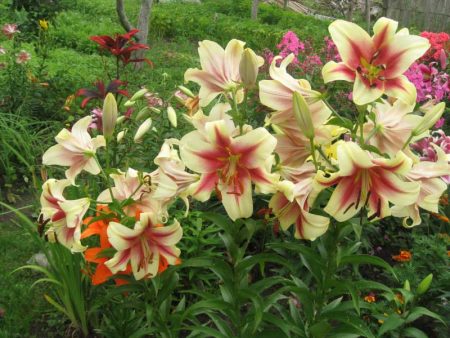 Flowers throughout their growth require attention, and the care of lilies after flowering is also very important. We will figure out how to properly care for a lily at home in the garden, so that next year you will get even more joy from the blooming of your beauties. Lilies need constant replenishment of the soil with potash-phosphorus complexes. We do not recommend using mineral complexes for them, which give only a temporary brief effect, and the plants can become even worse after such top dressing. Manure is also harmful to lilies; never bring it under the bushes of tender beauties, this can lead to various diseases, fungal and viral infections.
Flowers throughout their growth require attention, and the care of lilies after flowering is also very important. We will figure out how to properly care for a lily at home in the garden, so that next year you will get even more joy from the blooming of your beauties. Lilies need constant replenishment of the soil with potash-phosphorus complexes. We do not recommend using mineral complexes for them, which give only a temporary brief effect, and the plants can become even worse after such top dressing. Manure is also harmful to lilies; never bring it under the bushes of tender beauties, this can lead to various diseases, fungal and viral infections.
See also: Iris Siberian planting and care in the open ground.
Transplant after flowering
Around the middle of August, when about a month passes after the lilies bloom, you can already be puzzled by a flower transplant. Do not rush to do this earlier, because the bulbs of lilies should pick up enough nutrients before transplanting and mature well. When the stem with leaves has completely faded, use a fork to dig out, taking care not to damage the root, carefully remove dead parts, scales, rinse, and treat the bulbs with a disinfectant solution of potassium permanganate or karbofos. Then the onions need to be well dried in the shade, shorten the roots and you can begin to plant.
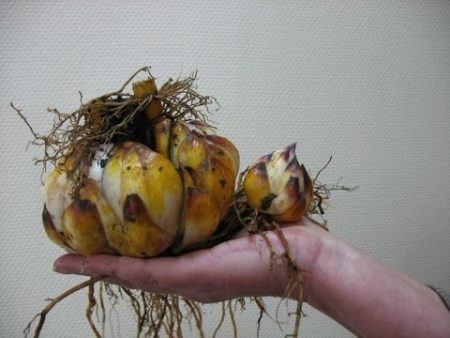
Bulbs are formed in the bulbs, they need to be separated and planted separately. After 2-3 years, they will already become completely independent plants and begin to bloom. So you can significantly increase the number of flowers on the site, and while the first bushes grow old, new ones from children will already come into effect.
Next, you need to prepare the soil - if the soil is heavy, greasy - add a little sand or pebbles to the planting pits so that the drainage is good, lilies do not like stagnation of water, their roots can rot. Sprinkle on the pebbles over the pebbles, you can pour more coniferous needles there, they will like lilies, and they will hurt less.
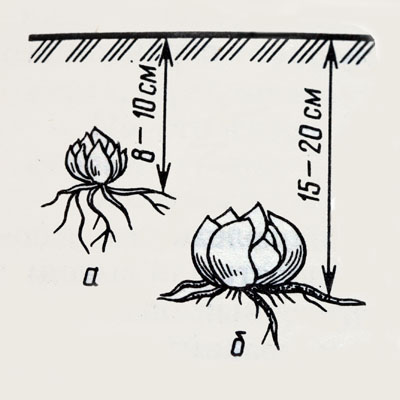
The depth of the hole is usually calculated as follows: the diameter of the onion times three. On light soils, you need to take a little deeper, drop large specimens to a depth of 12 cm, fines - up to 8 cm. The distance between the holes - depending on the size of the plant. For undersized, 15 cm will be enough; for tall ones, take more - up to 25 cm, so that they do not obscure each other. When planting, carefully spread the roots, sprinkle with earth, compact, then mulch. Peat, rotted sawdust or compost will do for this. This will help preserve moisture, warm the onions, and in the spring they additionally nourish them.
Usually transplanted plants that have reached 3-5 years, since the flowering intensity is already falling, the plants weaken, often suffer from thrips. Choose a bright area for transplantation, where there is no stagnation of water. We also need to focus on the color of lilies - light views of unequivocally sunny areas require, but dark and bright can feel great in partial shade.
For your flower garden: phlox perennial planting and care photo.
Shelter of lilies for the winter
In late autumn, the stems of lilies are cut, if the winter is harsh and not snowy - it is better to cover them with sawdust, moreover, with a layer of at least 10 cm, peat will also be suitable for this purpose. But - it is necessary to shelter when the earth begins to freeze slightly. Otherwise, mice for wintering and other rodents will climb into this shelter. In the spring, before the shoots appear, the shelter needs to be removed in time.
How to water lilies
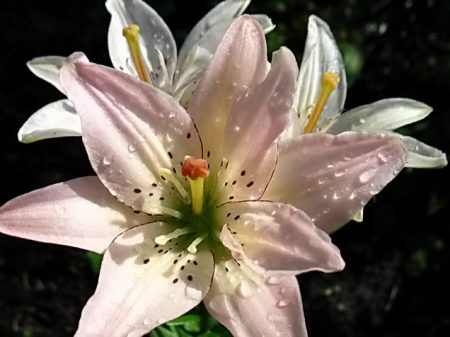
The capricious beauty is very gentle, and you need to handle her carefully.You can not water it on the leaves, it can get a burn or botritis - a fungal disease dangerous for lily. It is also not recommended to water in the evening, the best time is in the morning, or in the afternoon in the absence of a scorching sun. Water a little, but often, so that the soil does not dry out and is not wet. Waterlogging, especially in the heat, can lead to onion rot (fusarium), bacterial rot can also occur. In cool weather, overmoistening threatens with the development of brown spotting.
How to feed
Transplanted in the fall after blooming lilies in early spring, you need to feed them for the first time, when the stalks begin to grow - with a solution of ammonium nitrate, the second time - during the nitrophosal budding period, after flowering of lilies - potassium sulfate with superphosphate. For feeding lilies, disinfected composts that can safely be used are excellent, these are Bogatyr and PIKSA, and leaf humus also showed excellent results. For the prevention of diseases, it is imperative to spray plants with 1% Bordeaux liquid.
It is interesting: aquilegia outdoor planting and care photo.

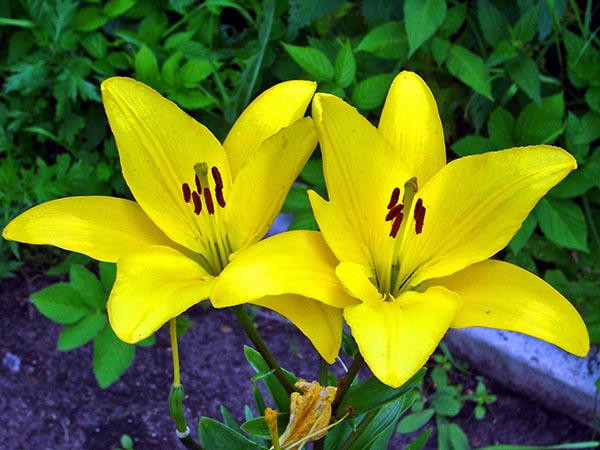
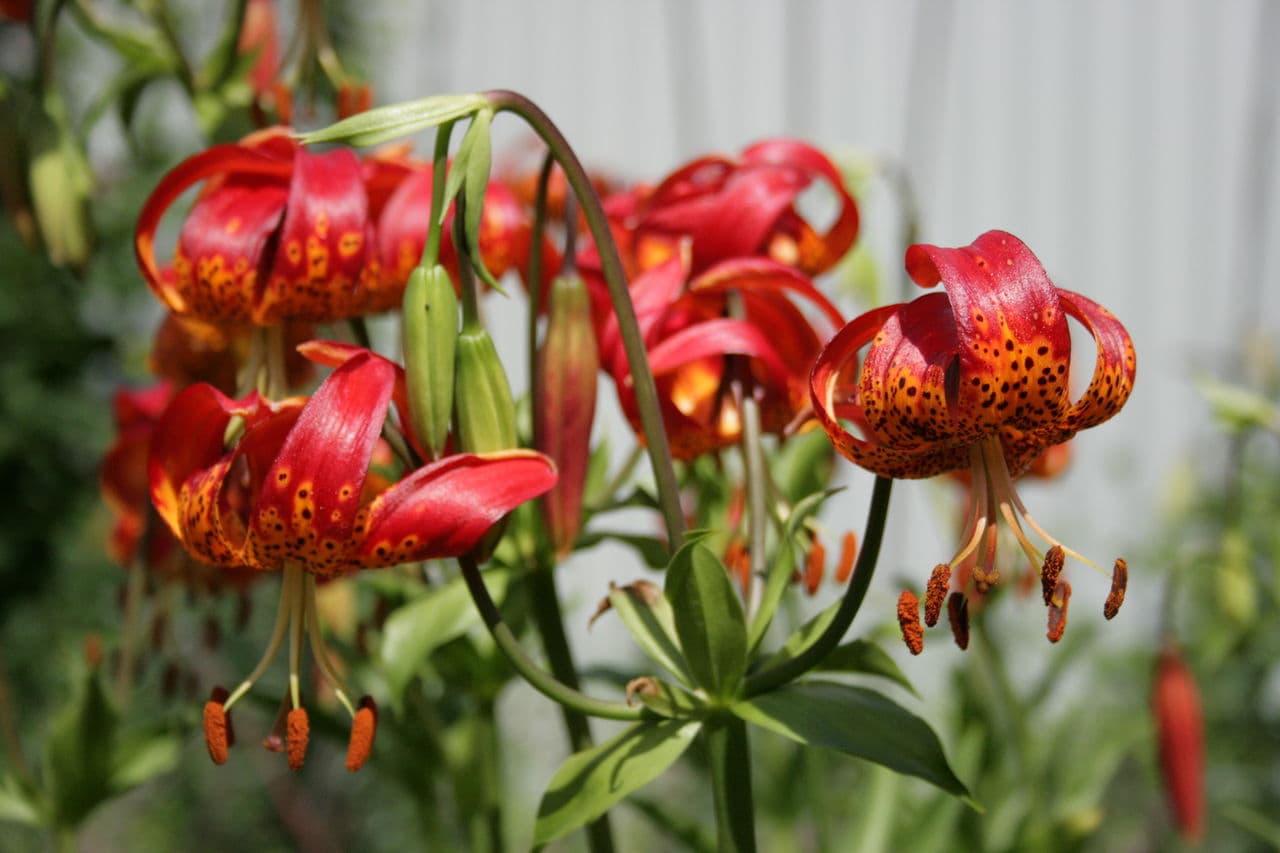

 Lily care after flowering
Lily care after flowering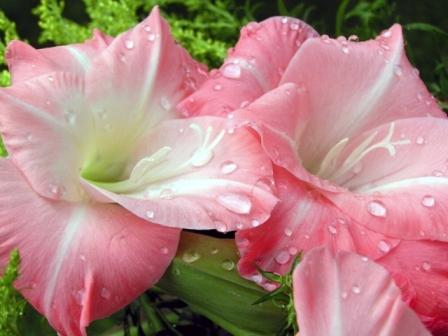 Lilies faded: what to do next?
Lilies faded: what to do next?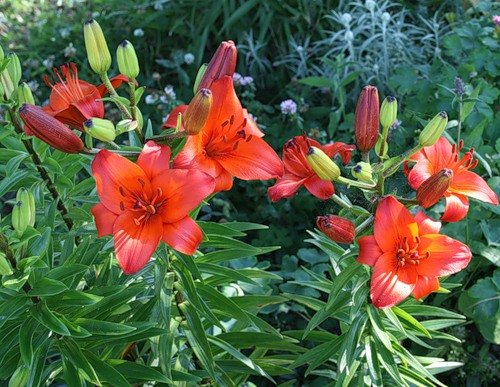 Planting lilies in the open ground and caring for them
Planting lilies in the open ground and caring for them